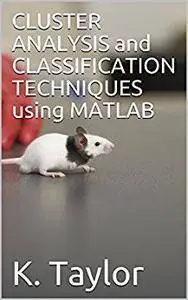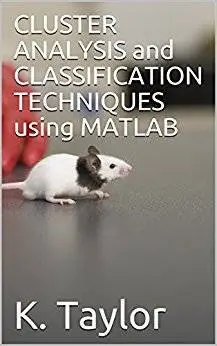CLUSTER ANALYSIS and CLASSIFICATION TECHNIQUES using MATLAB
2017 | English | ASIN: B06Y4WGPX7 | 548 pages | PDF + EPUB (conv) | 16.7 Mb
2017 | English | ASIN: B06Y4WGPX7 | 548 pages | PDF + EPUB (conv) | 16.7 Mb
Cluster analisys is a set of unsupervised learning techniques to find natural groupings and patterns in data. Cluster analysis or clustering is the task of grouping a set of objects in such a way that objects in the same group (called a cluster) are more similar (in some sense or another) to each other than to those in other groups (clusters). It is a main task of exploratory data mining, and a common technique for statistical data analysis, used in many fields, including machine learning, pattern recognition, image analysis, information retrieval, bioinformatics, data compression, and computer graphics.
Cluster analysis, also called segmentation analysis or taxonomy analysis, partitions sample data into groups or clusters. Clusters are formed such that objects in the same cluster are very similar, and objects in different clusters are very distinct. MATLAB Statistics and Machine Learning Toolbox provides several clustering techniques and measures of similarity (also called distance measures) to create the clusters. Additionally, cluster evaluation determines the optimal number of clusters for the data using different evaluation criteria. Cluster visualization options include dendrograms and silhouette plots.
Besides the term clustering, there are a number of terms with similar meanings, including automatic classification, numerical taxonomy, and typological analysis. The subtle differences are often in the usage of the results: while in data mining, the resulting groups are the matter of interest, in automatic classification the resulting discriminative power is of interest.
The more important topics in this book are de following:
Cluster analisys. Hierarchical clustering
Cluster analisys. Non hierarchical clustering
Cluster analisys. Gaussian mixture models and hidden markov models
Cluster analisys. Nearest neighbors. KNN classifiers
Cluster visualization and evaluation
Cluster data with neural networks
Cluster with self-organizing map neural network
Self-organizing maps. Functions
Competitive neural networks
Competitive layers
Classify patterns with a neural network
Functions for pattern recognition and classification
Classification with neural networks. Examples
Autoencoders and clustering with neural networks. Examples
Self-organizing networks. Examples



